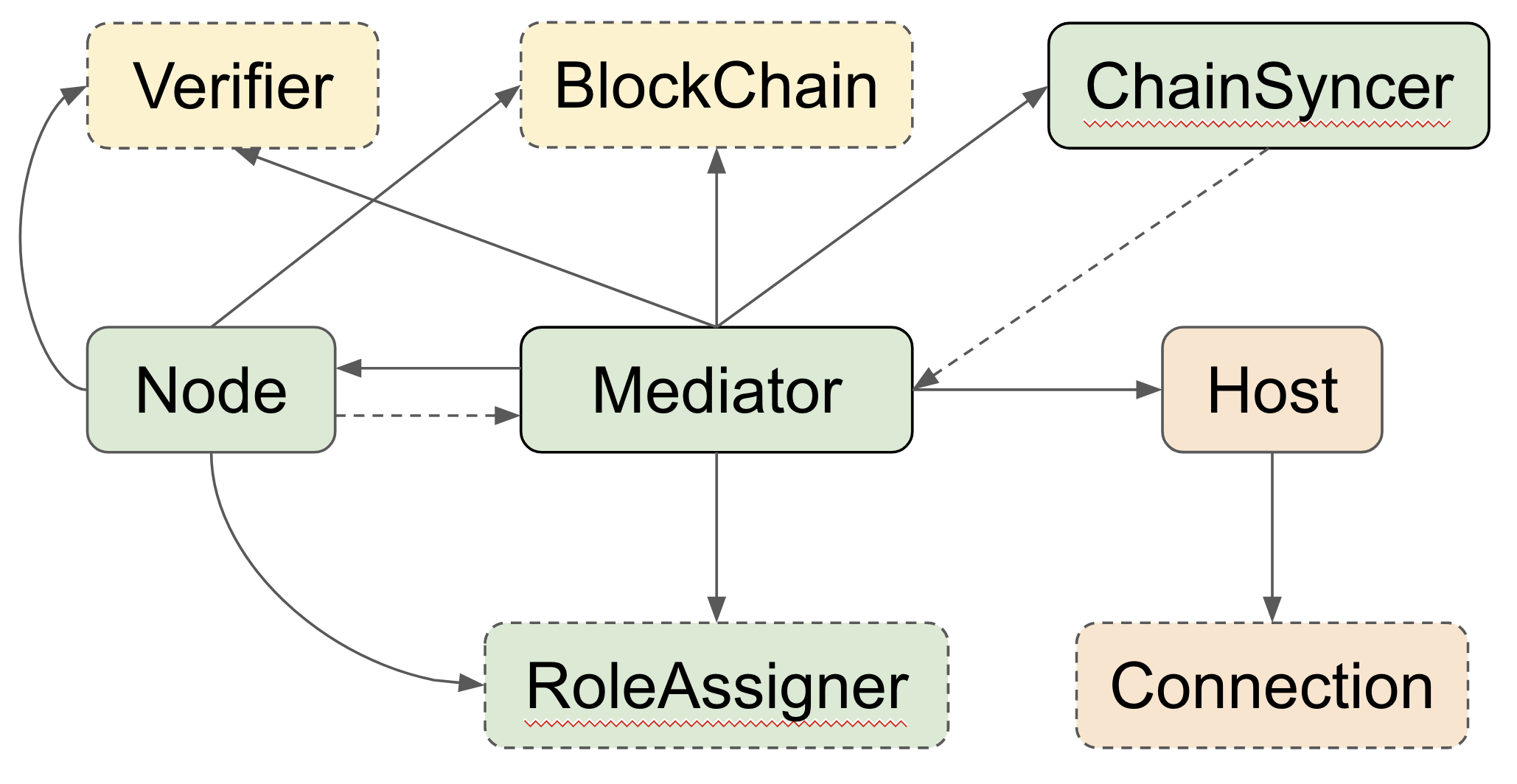PaLa is a byzantine fault tolerant consensus protocol invented by T-H. Hubert Chan, Rafael Pass, and Elaine Shi. It can achieve low latency and high throughput in a partially synchronous network setting. PaLa allows support seamless proposer switch with no delay in normal operation. When there is a network partition, the protocol switches proposers with little delay (say 6s) to keep liveness as long as there are at least one honest proposer and 2/3 voters in a single partition. All honest nodes maintain consistency no matter how the network is partitioned.
Thunder Token Inc, the company building the ThunderCore blockchain, plans to use PaLa to move towards a more decentralized architecture. This repository is a proof of concept of PaLa.
Here is a summary of its status:
- The consensus protocol is done with many test cases.
- The network package fulfills the minimum requirements of the protocol and is designed to be replaced in a production implementation.
- The blockchain package defines the interfaces used by the consensus layer and provides a detailed fake implementation. This is intended to be replaced with a real blockchain implementation e.g. Geth.
- There are many items marked with "TODO(thunder)" which are suggestions for making a production implementation.
We expect the code to work on any platform. However, the authors have only tested it on Fedora 29 with Go 1.10.
$ make shell
$ make dep
$ make test
To fill the gap between the academic paper and a working product, our developers discussed the details of PaLa with Prof. Elaine Shi and came up with the pseudocode. The pseudocode is the reference for this project and is a good starting point for understanding this beautiful consensus protocol.
Although PaLa is already a consensus protocol very suitable for implementation, a distributed system is inherently complicated. We take testing seriously and would like to test network partitioning and byzantine behavior as much as possible. With test-driven development in mind, we came up with the relationship diagram below:
We can replace objects with dashed lines by fake implementations to simulate our interesting control flows. For example, using fake connection objects, we can simulate network delays and partitions easily. Click here to see the full design document.
- Doubly Pipelined PaLa pseudocode: understand how the consensus protocol is implemented in practice.
- Terminology and data flow: understand how PaLa works via examples of different scenarios.
- Software architecture: understand the architecture and how objects interact.
- Goroutines and Channels: understand the concurrency design.
- Slides for PaLa talk: Slides for a talk on PaLa and PaLa software architecture given by Chia-Hao Lo @ COSCUP 2019. A recording of the talk itself given in Mandarin is available here.
Feel free to fork and make PRs. Since this is the proof-of-concept, we are glad to see feedback from the community and make the implementation and tests more complete.
Yes, however, developers in Thunder Token are working on many features and we may not update frequently.
As we explained in the Software Architecture document, we take testing seriously. The fake objects are used to assist tests and let us focus on the consensus protocol only. The core of the consensus protocol is a real implementation. However, to make a blockchain using PaLa, you need to replace those fake objects by real, production implementations.
TestLivenessAndDisasterRecovery is an example of recovering from data loss, and TestVoterReconfiguration is another example of switching proposers when there are network hiccups.
K affects finality latency and throughput. When K is high, the finality latency is longer, but we have more reliable throughput; when K is low, the result is the opposite. You can get an idea of the trade-offs from the single-process benchmark results below:
| K | 1 | 5 | 10 |
|---|---|---|---|
| Block per second | 45 | 216.5 | 406.5 |
- Packet delay: 10ms
- Number of voters: 33
- Test rounds: 5
